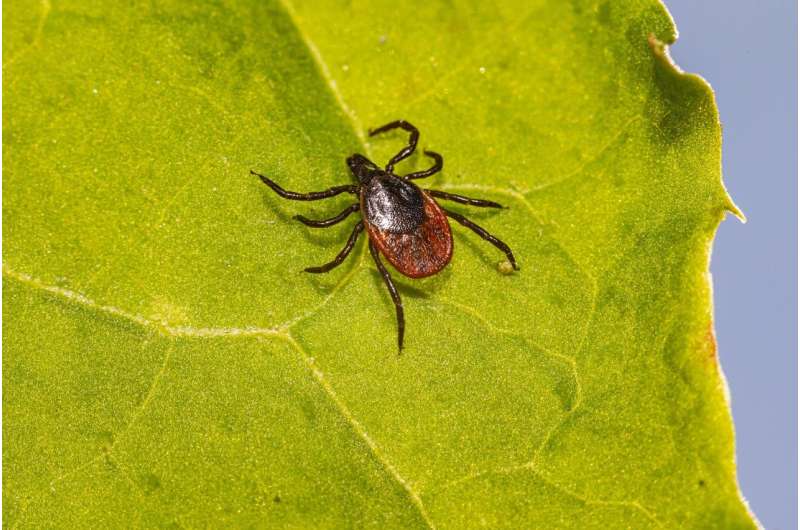
The Heartland virus is circulating in ticks in Georgia, researchers warned in a study published last week.
The findings, published in the journal Emerging Infectious Diseases and led by researchers from Emory University, analyzed virus samples from ticks collected in central Georgia. But the Heartland virus, first identified in Missouri in 2009, has been documented in multiple states across the Midwest and Southeast.
But what does that mean for your next hiking or camping trip? Is it time to be on the lookout for ticks that could carry the virus?
Jonathan Larson, an extension entomologist at the University of Kentucky, explained to USA TODAY that so-called tick seasons can vary across the United States, but “anytime when you’re outside from April into August and September, that’s kind of the high tick season for a lot of the eastern and southeastern United States.”
“You should be thinking about them almost any time of the year. It’s something that should be on everybody’s mind,” he said, explaining that blacklegged deer ticks, the main vectors for Lyme disease, are active as adults from October to May, as long as temperatures don’t dip below freezing.
Here’s what you need to know about the Heartland virus and steps you can take to protect you and your family from tick-borne illnesses.
What is the Heartland virus?
The Heartland virus spreads to people from an infected tick. As of January 2021, more than 50 cases of Heartland virus disease have been reported in Arkansas, Georgia, Illinois, Indiana, Iowa, Kansas, Kentucky, Missouri, North Carolina, Oklahoma and Tennessee, according to the U.S. Centers for Disease Control and Prevention.
“Heartland virus is one of the many diseases that could be vectored by ticks,” Larson said. “It’s a viral pathogen, which is different than we see with a lot of tick-borne illnesses, which are often bacteria.”
How do you get it?
Humans can get the Heartland virus after being bitten by an infected tick. The Lone Star tick can transmit the virus, but it isn’t known if other tick species can transmit it, according to the CDC.
“If you are bitten by a Lone Star tick, there is a possibility that they could have the Heartland virus if they’ve picked it up from another host, and then they could vector it into you,” Larson said.
What are Heartland virus symptoms?
Most people with Heartland virus report fever, fatigue, decreased appetite, headache, nausea, diarrhea and muscle pain, according to the CDC.
Dr. Ross Boyce, assistant professor of medicine in the division of infectious diseases at the University of North Carolina—Chapel Hill, told USA TODAY that certain groups, such as elderly, immunocompromised or young people, could be at higher risk for a severe, and even life-threatening, disease from tick-borne illnesses.
But he noted that it’s possible only the most severe cases of Heartland virus have been reported.
“With a lot of these insect-borne viruses, whether it’s Dengue or West Nile, there’s probably a huge iceberg under the surface, under the water, as far as the number of people who get infected that either don’t have symptoms or have only mild symptoms,” Boyce said.
Are there vaccines to prevent the virus? What about other preventions or treatments?
There are no vaccines or medications that prevent or treat a Heartland virus infection, according to the CDC.
Experts recommend that people avoid tick bites in general to protect against the Heartland virus and try to find a tick on your body early, before it attaches. People can use insect repellants, check their body and their child’s body for ticks and more.
“Ticks are smart, and they’ve evolved such that they’re going to move to places on your body that you don’t naturally see, so behind your knees and your hairline, under your armpits,” Boyce said. “That’s why it’s often helpful to have someone else look.”
He encourages people to take precautions when going outside, including wearing long pants. The CDC advises treating clothing with the insecticide permethrin and using Environmental Protection Agency-registered insect repellents.
What should you do if you see a tick?
If you see a tick on your clothes or shoes and it has not bitten you yet, you “don’t have to worry about pathogens,” Larson explained.
“It has to actually feed on you for any disease vectoring to occur,” he said. “I would just check the rest of your body to make sure you don’t find anybody that’s making a meal out of you. And if you don’t, then you’re in the clear.”
But if a tick has bitten you, “the longer it’s on you, the more likely it is to have passed the pathogen from its guts into your body,” Larson said.
“The best thing to do is to take a pair of pointy tweezers, get as close to your skin as possible and grip the head area of the tick and then pull straight up, steadily but not with a jerking motion,” he said.
“You don’t want to break any parts of the tick off into your body, which could lead to other infections, but you do want to get it out of the skin. Once it’s out of there, you can put it in some rubbing alcohol or into hot soapy water, anything that you want to do to try and kill it,” he added.
Larson warned against tactics like holding a match head to a tick or pouring alcohol on it.
“When you do that while the tick is feeding on you, you are agitating it, and you’re increasing the likelihood that it could sort of regurgitate into you. And that could increase the likelihood of disease transmission happening,” he said.
Source: Read Full Article



